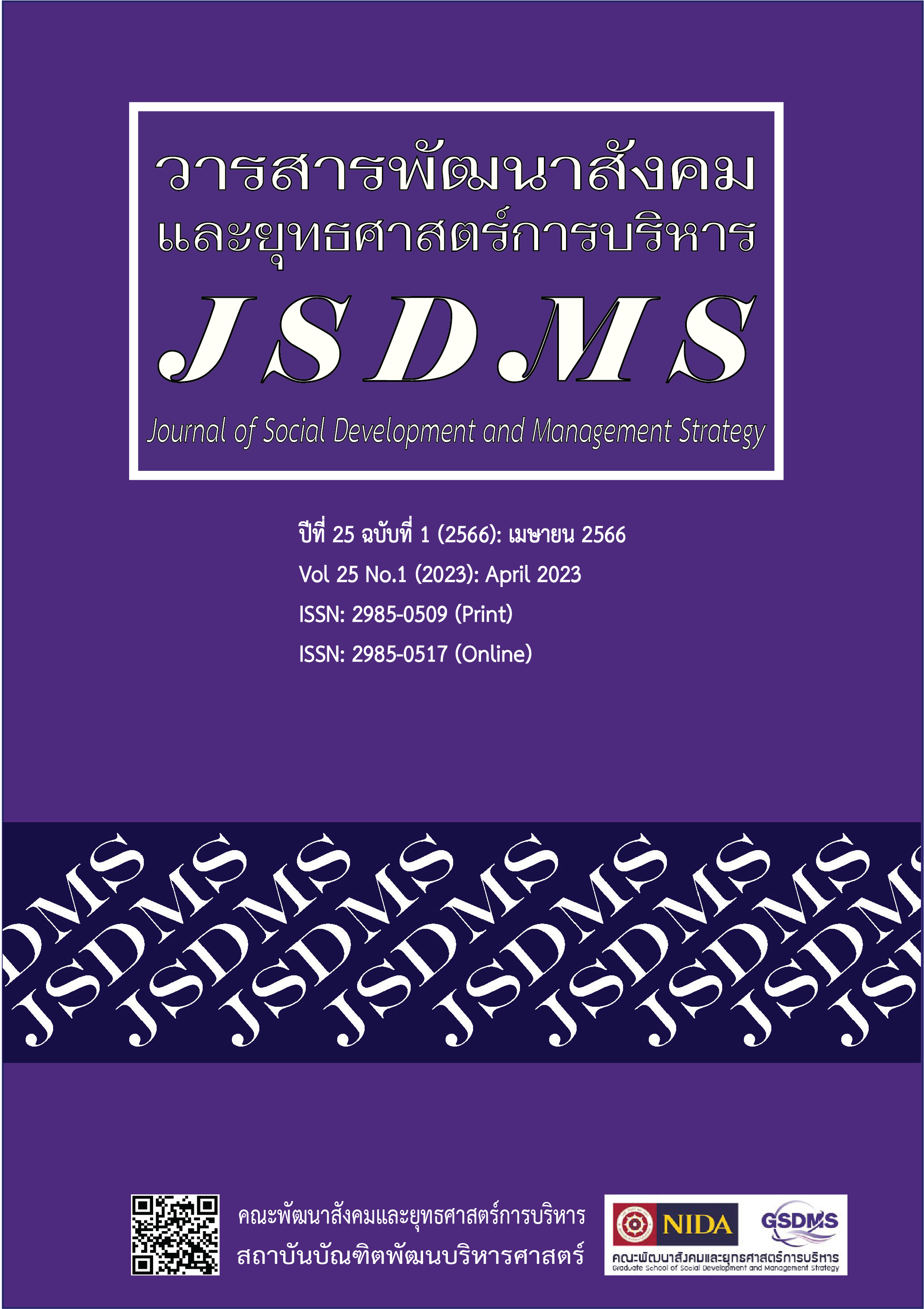ปัจจัยทำนายความเข้มแข็งของครอบครัว กรณีศึกษา ชุมชนตำบลป่าเซ่า อำเภอเมือง จังหวัดอุตรดิตถ์
Main Article Content
บทคัดย่อ
การวิจัยเชิงวิเคราะห์ครั้งนี้มีวัตถุประสงค์เพื่อศึกษาสถานการณ์ของครอบครัวและปัจจัยทำนายครอบครัวเข้มแข็งในพื้นที่ตำบลป่าเซ่า อำเภอเมือง จังหวัดอุตรดิตถ์ กลุ่มตัวอย่างคือหัวหน้าครอบครัวหรือตัวแทนที่ได้จากการสุ่มแบบมีระบบ เก็บข้อมูลโดยใช้แบบสอบถาม วิเคราะห์ข้อมูลโดยใช้สถิติเชิงพรรณนา วิเคราะห์หาปัจจัยทำนายโดยใช้สถิติการถดถอยพหุคูณแบบขั้นตอน ผลการวิจัยพบว่ากลุ่มตัวอย่างส่วนใหญ่เป็นหัวหน้าครอบครัว ร้อยละ 70.33 อายุเฉลี่ย 59.89 ปี (S.D.=13.53) ระดับการศึกษาสูงสุดของกลุ่มตัวอย่างส่วนใหญ่คือประถมศึกษา ร้อยละ 57.33 เป็นครอบครัวเดี่ยว ร้อยละ 78.33 จำนวนสมาชิกในครอบครัว เฉลี่ย 4 คน (S.D.= 1.72) ลักษณะครอบครัวพิเศษเป็นครอบครัวไม่มีบุตร ร้อยละ 37.88 ครอบครัวที่ต้องดูแลเด็ก ร้อยละ 25.76 ครอบครัวพ่อแม่เลี้ยงเดี่ยวร้อยละ 21.21 ครอบครัวที่ผู้สูงอายุอยู่ลำพัง และผู้สูงอายุที่ต้องดูแลเด็กเพียงลำพังเท่ากันคือร้อยละ 7.58 มีสมาชิกในครอบครัวที่มีภาวะพึ่งพิงสูง ร้อยละ 60.67 โดยลักษณะของสมาชิกที่มีภาวะพึ่งพิงสูง ได้แก่ มีผู้สูงอายุ ร้อยละ 80.81 ความเข้มแข็งของครอบครัวโดยรวมอยู่ในระดับปานกลางมีค่าเฉลี่ย 144.81 (S.D.=12.52) ตัวแปรที่สามารถร่วมทำนายความเข้มแข็งของครอบครัวได้อย่างมีนัยสำคัญทางสถิติมี 3 ตัวแปร ได้แก่ การจัดการปัญหา ภาวะเสี่ยงและการจัดการในภาวะยากลำบาก (β=0.781) การพึ่งพาตนเองด้านเศรษฐกิจ (β=0.344) และสัมพันธภาพในครอบครัว (β=0.290) โดยสามารถร่วมกันทำนายความเข้มแข็งของครอบครัวได้ร้อยละ 36.60 (R2=0.366)
Article Details

อนุญาตภายใต้เงื่อนไข Creative Commons Attribution-NonCommercial-NoDerivatives 4.0 International License.
เอกสารอ้างอิง
Best, J. W. (1981). Research education. (4th ed.). New Jersey: Prentice Hall Inc.
Bhubate Samutchak, Teeranoot Konkaew, & Ridhwan Uden. (2017). Well-being of Thai families (Research Report) [In Thai]. Nakhon Pathom: Institute for Population and Social Research, Mahidol University.
Bowes, J., & Warburton, W. (2012). Families as the primary context of children’s development. In Bowes J. Grace R. & Hodge K. (Eds.), Children, families and communities: Contents and consequences (4th ed., pp. 95-116). Melbourne: Oxford University Press.
Department of Women's Affairs and Family Development. (2016). Report on the situation of strength of Thai families for the year [In Thai]. Retrieved August 13, 2022 form https//www.m-society.go.th/aartical_attach/17445/19829/pdf
Dusadee Yolao, Ngamta Vanindananda, Chaiwat Wongasa, & Tasana Thongpukdee. (2002). Family strength: A healthy family. The Journal of Behavioral Science, 8(1), 1-10.
Jarumporn Vuthivaitya. (2014). Intra-family communication patterns, attitudes and behaviors of pre-sexual intercourse a good day for teenagers in Bangkok [In Thai]. Retrieved July 13, 2022 form book.gs.ac.th/57/grc15/files/hmp56.pdf
Kawinarat Suthisukon, Jiraporn Chompikul, & Thamma-Apiphol. (2017). Factors Affection Relationship in Thai Families [In Thai]. Local Administration Journal, 10(2), 152-168.
Kitipat Nontapattamadul. (2003). Study family security the frontier of knowledge for the security of human [In Thai]. Journal of Social Work, 11(3), 130-134.
McGuire, A., Runge, C., Cosgrove, L., Bredhauer, K., Anderson, R., Waller, M., & Naveld, P. (2012). Timore-Leste family study: Summary report. Brisbane, Australia: The University of Queensland.
Nachima Bakoh. (2017). Positive psychology and social capital towards self-management and internal management families of married muslim Women lead to strong families in the three border provinces [In Thai]. (Unpublished doctoral dissertation), Srinakharinwirot University, Bangkok.
Nuanchavee Prasertsuk. (2015). Constructive communication for family happiness [In Thai]. Veridian E-Journal, Silpakorn University, 8(2), 737-747.
Office of Health Promotion, Department of Health, Ministry of Public Health. (1997). Study of research results and guidelines build a desirable family in Thailand [In Thai]. Bangkok: Health System Research Institute.
Office of Social Development and Human Security Uttaradit Province. (2021). The results of the strong family survey Uttaradit. Uttaradit: Office of Social Development and Human Security.
Panadda Yimsakul. (2018). The strengthening Thai family by using phychological knowledge. DRURDI Research for Community Service Journal, 4(1), 59-66.
Puntsri Polsri, Kitirat Sihaban, & Boonyasarit Aneksuk. (2017). Approaches of Building Family Strengths in the Slum in Ubon Ratchatani Province [In Thai]. Academic Journal Phranakhon Rajabhat University, 7(1), 64–73.
Rogers-Baber, M. (2017). Protective factors in families: Themes from a socioecological study of Australian defense force families experiencing parental deployment, SAGE Open, 4(2), 1-16.
Sa-ard Sriwan, Sanya Kenaphoom, & Pakdee Phoosing. (2017). Social strength based on strength family institution [In Thai]. Journal of Research and Development Institute, Rajabhat Maha Sarakham University, 4(2), 93-111.
Sriprapai Inchaithep. (2011, August). The development of happiness family indicators for families in Lampang province [In Thai]. Paper presented at the meeting of Graduate Research Presentation Conference Sukhothai Thammathirat University No. 1, Sukhothai Thammathirat Open University.
Thipawan Ramrong & Matrinee Raktanonchai. (2011). Formulation of strong family indicators [In Thai]. Journal of Soc Sci & Hum, 37(1), 198-208.
Tippavan Surinya. (2004). The study of the family strength; Psychological factors and modeling [In Thai]. Health Policy and Planning Journal (Thailand), 7(4), 93-106.
Tippavan Surinya. (2008). Model of strengthening Thai families [In Thai]. Maharat Nakhon Ratchasima Hospital Medicine Bulletin, 32(2), 110-119.
Uttaradit Province Office. (2021). Plan and strategies of Uttaradit province [In Thai]. Uttaradit: Author.
Walsh, F. (2003). Family resilience: A framework for clinical practice. Family Process, 4(2),1-18.
Yutthana Chaijukul, Panee Boonprakob, Manat Boonprakob, & Tasana Thongpukdee. (2009). Family strength research and development through participatory learning process of Tambon Administrative Organization Leader [In Thai]. The Journal of Behavioral Science, 15(1), 162-184.


